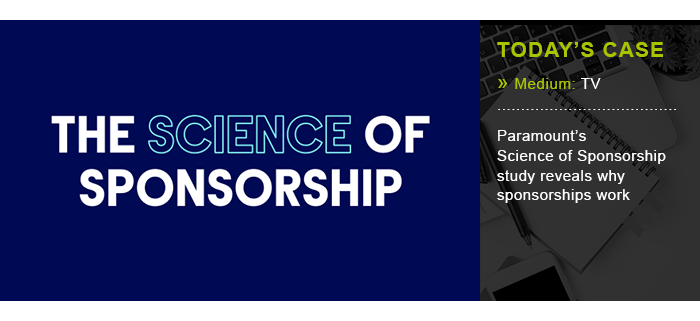By surveying over 3,200 Australian TV viewers aged 18-69 and testing responses to content and advertising across different TV show moments, Paramount ANZ were able to uncover how and why sponsorships work so well for brands.
Gareth Tomlin, General Manager, Data, Insights & Analytics at Paramount ANZ, presented the study’s findings at egta’s TV MIM (Market Intelligence Meeting) earlier in March. The full presentation can be viewed here.
The four pillars of sponsorship success
In partnership with Peter Hammer from The Marketing Scientist Group, the study involved the use of gaze technology to measure attention and emotion, accompanied by an additional viewer questionnaire, which allowed Paramount ANZ to look at the real impact of ad placement, talent and sponsorships, incorporating both content integrations and TV commercials. Participants’ reaction and emotions towards a total of 48 different TV moments from shows, such as The Bachelor Australia, MasterChef Australia and Australian Survivor, were monitored and measured.
The results were clear: sponsorships work! Including a brand within programming content increases purchase intent by 21% and by much more, 46%, when the brand is the main focus of the content.
But why exactly do sponsorships work so well? The Science of Sponsorships study highlights four key reasons: Engagement, fandom, emotion and trust. When viewers like a show, the engagement is heightened. Liking a show is, therefore, a powerful part of sponsorship effectiveness. The more a viewer likes a show, the more likely they are to recall the ads, like the ads and intend to actually buy the product advertised.
Engagement beyond simply watching the show also plays a role in a sponsorship’s success. The effect of a show’s talkability correlates with ad likeability and purchase intent. In that context, fandom is particularly powerful, as fan engagement with a TV show overall is higher than the average viewer. Fans pay more attention to both the content and the ad break, with higher brand recall and purchase intent amongst fans. For most programmes, fans make up just over a quarter of total viewing yet they consume the content across more touchpoints than other viewers, by reading articles, following talent on social media, listening to podcasts and more.
The study found that sponsorships work in part by building top-of-mind awareness - when participants were exposed to brand integrations, top-of-mind awareness lifted by 79%, compared to the control group, while unprompted awareness rose by 60%. This is enhanced by the frequency of the brand’s inclusion in the programme - unprompted brand recall lifted by 20 points for brands with up to two spots in a segment (such as a TV commercial and a billboard at the start of the break), while brands with up three spots saw a further 20-point increase.
Brands with storyline integrations, for example, the Bachelor driving a particular brand of car, scored particularly well, as top-of-mind awareness and unprompted awareness increased by over 40%.
The Science of Sponsorship study has helped Paramount ANZ to refine their strategies and the research arms agencies and marketers with collateral to support significant investments in programme sponsorships. The research also supported the company’s 20% growth in premium sponsorship revenue in 2021. egta members can read more about the study and watch Gareth’s presentation here.

